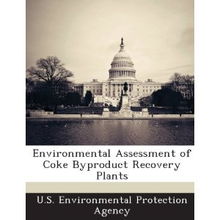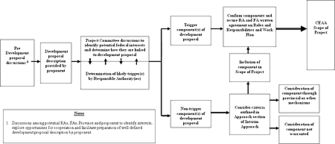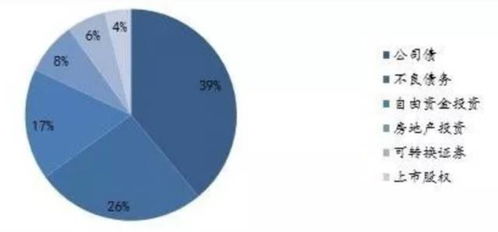The Environmental Assessment of Textile Sizing and Setting Processes
This study aims to evaluate the environmental impacts of textile sizing and setting processes. The research focuses on the use of synthetic materials in these processes, which can have negative effects on the environment. The study conducted an environmental assessment by analyzing the production and disposal of textile products. The results indicate that the use of synthetic materials in textile sizing and setting processes has a significant impact on the environment. The study recommends reducing the use of synthetic materials in these processes and finding alternative methods to minimize the environmental impact. The findings of this study can help textile manufacturers to adopt more sustainable practices and reduce their environmental footprint.
Introduction: The textile industry is one of the most significant contributors to global economic growth, with an estimated $1.7 trillion in annual revenue worldwide. However, this sector also has a considerable environmental footprint, with significant emissions and waste generation associated with the production and disposal of textile products. One crucial process in the textile industry that contributes significantly to its environmental impact is the sizing and setting of textiles. This process involves treating fabrics with chemicals to improve their strength, texture, and durability. While this step can enhance the quality of the final product, it also poses significant challenges for environmental sustainability. In this article, we will explore the environmental assessment of sizing and setting processes, including the use of chemicals and the potential impact on the environment. We will also present an example of how these processes can be optimized to reduce their environmental impact.
Chemical Use in Sizing and Setting: Sizing and setting are essential steps in the textile industry that involve the use of various chemicals to improve the properties of fabrics. These chemicals include alkalis, surfactants, and dyes. Alkalis are used to increase the strength and elasticity of fabrics, while surfactants help to remove excess water from fabrics during the sizing process. Dyes are added to create vibrant colors on fabrics. While these chemicals have proven beneficial in enhancing the quality of textiles, they also have significant environmental impacts.
Environmental Impact of Sizing and Setting Chemicals: The use of chemicals in sizing and setting processes generates significant amounts of waste, including toxic substances such as heavy metals and pesticides. These chemicals can contaminate soil, water bodies, and air, posing serious health risks to humans and wildlife. Additionally, the disposal of these chemicals requires significant energy and resources, contributing to greenhouse gas emissions and other forms of pollution.
Example: One example of the environmental impact of sizing and setting chemicals is the case of a textile company in India that was found guilty of using hazardous chemicals in their sizing process. The company was fined $20 million by the Indian government for violating environmental regulations related to the use of toxic chemicals in the textile industry. This case highlights the importance of stricter regulations and better monitoring of chemical usage in the textile industry to protect the environment.

Optimizing Sizing and Setting Processes: To minimize the environmental impact of sizing and setting processes, several strategies can be implemented. One approach is to use alternative chemicals that are more environmentally friendly, such as natural preservatives or biodegradable compounds. Another strategy is to optimize the use of chemicals by reducing their amount or frequency of application. This can be achieved through the use of advanced technology, such as automated control systems that adjust the amount of chemicals used based on the fabric's properties and requirements.
Conclusion: The textile industry plays a vital role in global economic growth, but its environmental impact cannot be ignored. Sizing and setting processes are a critical component of this industry, but they also have significant environmental consequences. By implementing strategies to optimize these processes and reduce their use of harmful chemicals, the textile industry can play a significant role in reducing its environmental impact and promoting sustainable development.
纺织品上浆定型概述
随着纺织行业的快速发展,纺织品上浆定型技术越来越受到重视,本篇报告将围绕纺织品上浆定型环评展开讨论,包括其背景、目的、方法和案例分析。
纺织品上浆定型背景
纺织品上浆定型技术广泛应用于各种面料生产过程中,特别是在服装、家居装饰等领域,随着人们对环保和可持续性需求的提高,纺织品上浆定型行业面临着严格的环保要求,进行纺织品上浆定型环评,有助于推动行业绿色发展,提高产品质量和环保标准。
纺织品上浆定型目的
纺织品上浆定型的目的是提高纺织品的质量和稳定性,使其具有更好的外观和性能,通过环评,可以评估纺织品上浆定型过程中的环境影响,为行业决策提供依据。

纺织品上浆定型方法
- 上浆剂的选择与使用:介绍不同类型和品牌的上浆剂,阐述其使用方法和注意事项。
- 烘干工艺:介绍烘干工艺的流程和参数设置,以及其对纺织品质量的影响。
- 设备选型与维护:介绍用于纺织品上浆定型的设备类型和选型原则。
案例分析
以某知名纺织企业为例,介绍其在纺织品上浆定型过程中的环保实践和效果,该企业在生产过程中采用了环保型上浆剂,优化了烘干工艺,并采用了高效节能的设备,通过这些措施的实施,该企业的纺织品上浆定型过程对环境的影响得到了有效控制,同时也提高了产品质量和客户满意度。
纺织品上浆定型环评方法
- 环境影响评估:评估纺织品上浆定型过程中产生的废水、废气、噪音等环境影响。
- 工艺流程分析:分析纺织品上浆定型的工艺流程,评估其对环境的影响程度。
- 设备选型与运行情况评估:评估用于纺织品上浆定型的设备选型和运行情况,包括能耗、排放等指标。
- 风险评估与应对措施:评估纺织品上浆定型过程中的风险点,提出相应的应对措施。
通过本篇报告的讨论,可以看出纺织品上浆定型行业在环保方面面临着巨大的挑战和机遇,为了推动行业绿色发展,需要加强行业自律,提高产品质量和环保标准,也需要加强环评工作,为行业决策提供依据,在未来的发展中,纺织企业需要积极探索新的环保技术和工艺,提高生产效率和质量,降低环境污染。
建议与展望
针对纺织品上浆定型行业的特点和发展趋势,提出以下建议和展望:
- 加强技术研发和创新,推动新型环保技术和工艺的应用和发展。
- 加强行业自律和监管,提高产品质量和环保标准。
- 加强国际合作和交流,共同推动纺织行业绿色发展。
- 关注消费者需求和反馈,不断提高产品和服务质量。
- 展望未来纺织行业的发展趋势,预测其可能面临的机遇和挑战。
Articles related to the knowledge points of this article:
New Area Manufacturing Needlecraft Textiles Wholesale Prices
Protecting Your Skin with Textile Materials Against Mosquito Bites
Comprehensive Guide to Textile Hand Embroidery Wholesale Prices
Textiles in the Modern World of Industry
The Green Textile Market in Suzhou:An Introduction to its Location



